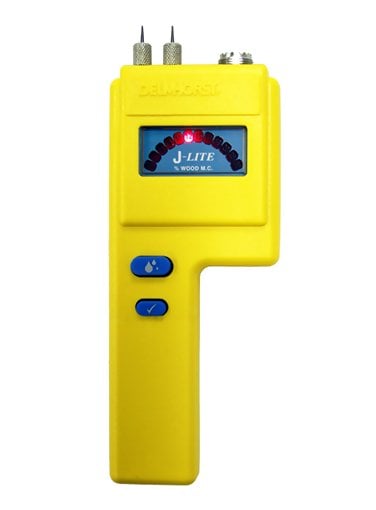
12 bright LEDs - Great for reading in direct sunlight or dark areas.
Moisture Range: 6% - 30%.
Built-in calibration check.
The Delmhorst J-Lite Pin-Type Wood Moisture Meter is a great all-around tool for any situation! Whether you're experienced or just starting out, you can't go wrong with the Demhorst J-Lite moisture meter! With J-Lite's unique LED display, you'll be in the know no matter where the job takes you.

Kit Contents

- Delmhorst J-Lite Moisture Meter
- Instructions
| 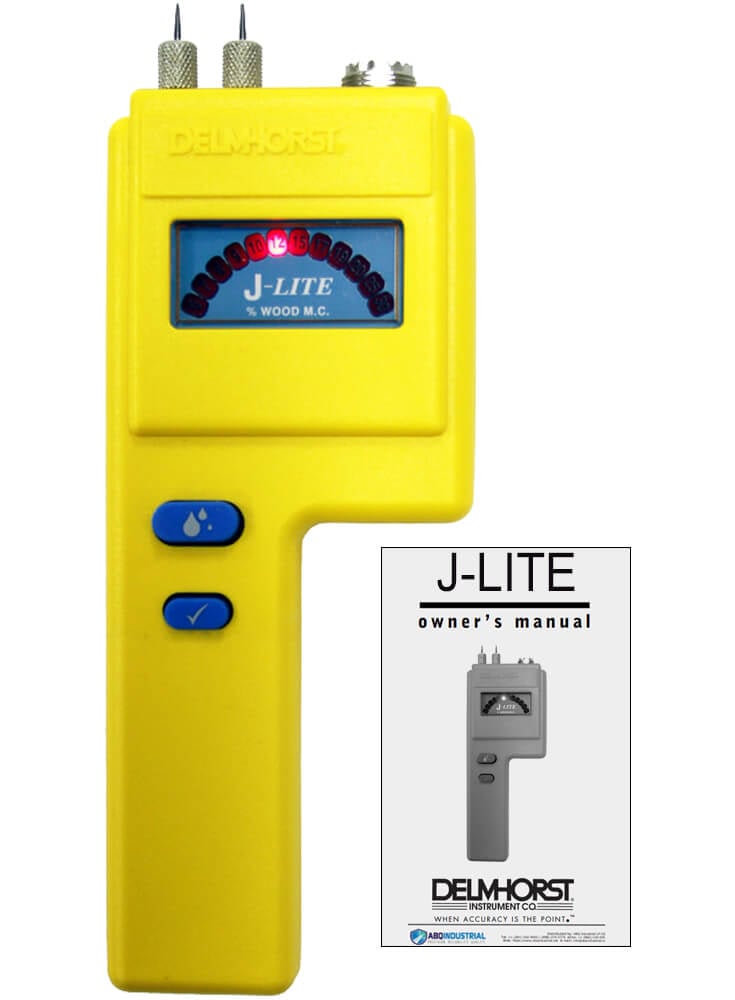 |

Features

- 12 bright LEDs - Great for reading in direct sunlight or dark areas.
- Moisture Range: 6% - 30%.
- Built-in calibration check.
- Integral contact pins mounted on the meter prove 5/16 penetration.
- Built-in connector accepts any Delmhorst electrode.
- Size: 8 x 3 x 1 5/8.
- Weight: 10 oz.
- Rugged construction ensures years of reliable use.
- Sturdy plastic carrying case.
- 9V battery.
- 3-year warranty.

Accessories

1849 - An alternate to the 496 pin for the 26-ES, the 1849 is a 1 insulated pin with 1/2" penetration. The 1849 is suitable for wood up to 2" thick.
| 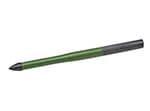 |

2497/A-100 - Uninsulated pin and retainer with 5/16" penetration. Standard on all meters with built-in pins and the 2-E and 4-E electrodes. Used on wood up to 6/4 (1 ), concrete and gypsum
| 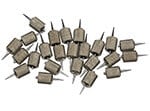 |

305RET-0021 - Retainer used to hold contact pins in place. Used with #608 and #608/001. Available in packs of 4 as 305RET-0021/4.
| 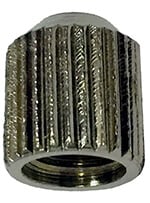 |

496 - 496 contact pins are insulated except at the tips, and measure 2" overall with 1 1/8" penetration. Standard on the 26-ES, and can be used to check wood up to 5" thick.
| 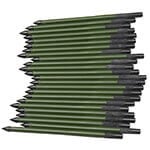 |

608 - The 608 insulated contact pins measure 4" overall, and penetrate 3 1/4". Standard on 21-E and 18-ES electrodes, and can be used on roofing, insulation, timber, poles, and EIFS. Also available in 7 length with 6 penetration as 608/001.
| 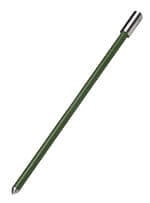 |

632 - Retainer used to hold contact pins in place. Used with #496, #1849, and #A-111 pins. Available in packs of 4 as 632/4.
| 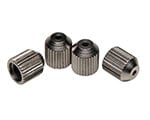 |

A-111 - Another alternative to the 496, the A-111 is an uninsulated contact pin measures 1 7/16 and has 1/2" penetration. The A-111 is compatible with both the 26-ES and the 22-E, and its tapered point makes it easier to penetrate into hard surfaces. Can be used on wood up to 2" thick.
|  |

HP-1 - Makes pilot holes in stucco to reduce pin damage
|  |

MCS-1 - Moisture content standards are great for verifying that your Delmhorst moisture meter is in calibration. The MCS-1 can be used on any meter with a wood scale. With two electrical resistance values (12% and 22%) to test your meter against, you can be sure that your readings will stand up to the strictest standards of accuracy. The MCS-1 is also available with a letter of certificationtraceable to NIST.
| 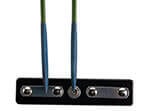 |

Eletrodes

Delmhorst offers a wide assortment of electrodes known throughout the industry for their durability. All Delmhorst electrodes fit any Delmhorst moisture meter. Below are electrodes that are typically used for this model:
2-E Fitted with the same 5/16" penetration pins that are mounted on our pin type meters. This electrode is great for a variety of different applications - Home inspector:use on wood joists and drywall.
- Paper producer:use on curved surfaces such as cardboard and paper tubes.
- Woodworker:use on timber, poles, and veneer/
2-E is also available as the 2- ET with a tapped handle for hard to reach areas. Can also be fitted with A-103 uninsulated pins with 1 3/32 length and 11/16 penetration. | 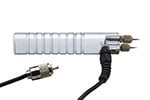 |

26-ES The 496 contact pins that come with the 26-ES penetrate 1 1/8 and have insulated shanks so that only the tips are exposed. The pins make contact only at their uncoated tips and provide much more accurate readings of moisture content at various levels of penetration. This feature is useful for a variety of different applications - Flooring installers:Penetrate through flooring to plywood sub-floor, or concrete.
- Dry kiln operators:Identify moisture gradients which helps to identify the drying pattern.
- Furniture manufacturers and craftsmen:Easily check high density hardwood that short pins are unable to penetrate
Also available as the 26-ED, which includes gauge to measure pin penetration depth | 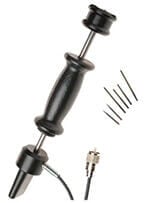 |

21-E- The 608 pins that come with the 21-E are insulated, except at the tips, and can reach a maximum penetration of 3-1/4".
- Great for use on roofs, insulation, or EIFS.
- 21-E is also available as the 21-E/001 with 6" penetration, or as the 21-ET with a tapped handle for hard to reach areas.
|  |

22-E- Comes with A-111 uninsulated contact pins for 1 1/2" penetration. For use on plaster, masonry and wood. Will also accept 496, insulated pins; 1 1/16 penetration.
- 22-E is also available as the 22-ET with a tapped handle for hard to reach areas.
|  |

19-E/STC- Features two 5'' long blades, bent to a 35 angle, and coated in Teflon except for the tips. Great for checking behind trim and baseboard molding.
|  |

2-E/SPLIT- Makes moisture testing in hard to reach places a breeze. Simply attach any length metal probe to the alligator clips on the end of the 2-E/Split and test behind toe kicks, through drywall, or any other area where our standard length contactspins arent long enough
| 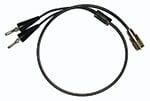 |

Downloads

 F.A.Q.
F.A.Q.
BUILDING INSPECTION:
Why should i use a Moisture Meter
Home Inspectors, Pest Control Operators and EIFS inspectors know that Moisture intrusion is the single most important factor affecting the integrity of building structures. Delmhorst Instrument Company offers Moisture Meter packages specifically manufactured to meet the needs of inspectors. Proper use of a Moisture Meter allows the inspector to easily identify the source of Moisture and to locate areas in the building that have been affected by moisture.
How does a Moisture Meter work
There are two types of Moisture Meters typically used by the home inspector. Pin-type Meters, which utilize the principle of electrical resistance, use wood or other hygroscopic materials as an element in a circuit by driving two pins or electrodes into it.
Pinless Meters use radio frequency signals to penetrate the material being tested. There is no pin intrusion into the surface of the material you are checking.
Can i use a Moisture Meter to check for pest infestation
Yes -- a few Meter readings in key locations of the structure will quickly indicate if the areas are safe or in danger of infestation. We recommend using pin-type Meters for pest control applications as the best way to identify the exact point of infestation behind walls and ceilings. The key to finding hidden Moisture is to use an electrode with insulated contact pins. These pins read only at their un-insulated pin tips, allowing the contractor to drive the pins into material at different depths, noting readings at each level of penetration.
A pinless Meter is a good way to identify infested areas, as long as you do not have to penetrate into a hidden material.
At what level of Moisture does infestation or decay occur
Wood technologists and pest control experts agree that most fungi need at least 20% MC. Readings higher then 20% is susceptible to mold growth and decay. Readings in the 17%-20% are borderline and normally require further testing. On the other hand infestation can occur at much lower levels, especially in humid conditions. Old House Borer and Powderpost Beetles can attack wood that falls in the 12-13% range.
Which type of Moisture Meter works best for EIFS
To quickly identify wet areas, a pinless Meter is easy to use. Pinless Meters offer the convenience of testing a large area quickly, and help you determine if further testing is required in certain spots.
Pinless Meters read Moisture closest to the source of the magnetic field, in this case, at the surface. Most pin-less Meters read at a depth from 1/2" to 1". Moisture that resides in the substrate or insulation may go undetected without using a deep penetrating electrode. It is also important to remember that any metal or other conductive material behind the EIFS may give false readings.
A pin type Meter, on the other hand, is the best way to identify the exact location of Moisture in the substrate and framing. A pin-type uses two pins that penetrate into the building at the users desired depth. When insulated contact pins are used, only the uncoated tips are exposed to the wood fiber, providing an accurate reading of Moisture content at various levels of penetration. Pin-type Meters are the only instruments that allow the inspector to identify exact location of Moisture at a given point.
Many EIFS inspectors use both types of Meters. They can quickly identify problem areas using a pin-less Meter, and also use a pin-type Meter to identify exact location of Moisture in the wood substrate.
Where does most Moisture intrusion occur in eifs clad houses
Most Moisture intrusion occurs around windows, doors and any flashing. In many cases the Moisture intrusion is directly related to poor installation practices.
How can i find Moisture in the substrate or frame of the house.
The most effective way to check for Moisture in the substrate or frame is to us our 21-E electrode with 6" penetration pins. This method allows you to locate Moisture behind the EIFS without it having to be torn away.
How Do I Keep a Delmhorst Meter in Good Working Condition
Delmhorst Moisture Meters are well known for their ruggedness and ability to withstand years of rough handling. Like any testing instrument, a little care goes a long way toward trouble-free service:
- Store the Meter in clean, dry place
- Change batteries and pins as needed
- Keep the Meter and electrode clean by using any biodegradable cleanser sparingly on external parts only.
If you have any doubt about the working condition of your Meter, send it to Delmhorst. We can repair and re-calibrate your instrument to its original standards and return it to you quickly.
FLOORING & WOOD PRODUCTS:
Why should i use a Moisture Meter
Structurally sound and beautiful in appearance, wood is the ideal raw material. Flooring professionals know that Moisture content is the single most important factor affecting the quality of a wood flooring installation.
To ensure quality from the manufacturer to the final installation, Delmhorst offers a full range of Moisture Meters that help minimize defects such as shrinkage, cracks, and splits. Years of experience, high-tech tools and controls, and premium grade wood cannot make a difference if Moisture content goes unchecked.
How does a Moisture Meter work
There are two types of Moisture Meters typically used in the flooring industry. Pin-type Meters, which utilize the principle of electrical resistance, use wood or other hygroscopic materials as an element in a circuit by driving two pins or electrodes into it.
Pinless Meters use radio frequency signals to penetrate the material being tested. There is no pin intrusion into the surface of the material you are checking.
Which type of Moisture Meter works best for a flooring job
To quickly identify wet areas in floors, pinless Meters are easy to use. They offer the convenience of testing a large area quickly, and help you determine if further testing is required in certain spots. A pinless Meter may also be used to determine if water-born finishes are dry and ready for a second application.
A pin type Meter, on the other hand, is the best way to identify the exact location of Moisture in sub-floors. The key to finding hidden Moisture is to use an electrode with insulated contact pins. These pins read only at their un-insulated pin tips, allowing the contractor to drive the pins into the floor and through to the sub-floor, noting readings at each level of penetration.
What are the ideal Moisture conditions for the sub-floor and wood flooring so problems can be avoided
Flooring strips or planks - and the sub-floor - should be brought to equilibrium before installation. Best results are obtained when the wood sub-floor is within 4% MC of the flooring, maximum.
If the floor is on concrete, especially a slab on grade, the challenge is to be sure that the slab is dry and not likely to pick up Moisture later on. Please refer to the Operating Instructions section under PRODUCT SUPPORT for more info.
Why doesn't the Meter give Moisture content in percent on concrete
Because the exact makeup of concrete is usually unknown, it is virtually impossible to provide a %MC calibration. Delmhorst Moisture Meters feature a 0-100 reference scale that provides dry to wet indications of the presence of Moisture. Factors that affect concrete Moisture readings include it's mix ratio and type, voids, and depth that the pin penetrates.
How does static electricity affect Meter readings
In cold and/or dry climates, static charges may cause erratic Meter readings in the range below 8 percent. Measuring such high resistance under these conditions is difficult enough, but the winter months can make it more so. The analog Meter pointer "jumps" all over the scale or the digital display may flash erratic numbers. To minimize the effect of static:
- Try not to let the electrode cable dangle.
- Drive the electrode pins into the wood with the Meter turned off, and then turn the Meter on when you are ready to take the reading.
- After driving the pins, place your hands next to them on each side of the electrode to help discharge the static from the board.
- You can also try passing a damp cloth over the board's surface to pick up any static charges before driving the pins.
These suggestions are not guaranteed. However, depending on the conditions, any one of them can work, either alone or in combination with another.
Are there board width limitations in using Moisture Meters
Board width is not a limiting factor when using a pin type Moisture Meter. As long as the pins make good contact, the Meter can be used on anything from small dowels to wide planks.
For accurate results with a pinless Meter, the material you're testing must be at least the width of the scanning area on the bottom of the Meter. Otherwise the Meter will not make firm contact with the board and may provide inconsistent, unreliable readings.
How Do Delmhorst Meters Handle Readings on Rough-Surfaced Lumber and Cupped Boards
With a pin-type Meter, these conditions are not a problem. Just drive the pins as you would normally, insuring firm, positive contact and detect unknown gradients.
Pinless Meters, however, need firm contact to a flat surface so their readings on uneven surfaces may be unreliable.
How do i determine if the Moisture problem is in the finished floor or the sub floor
In order to find this out, you must use a pin type Meter with insulated contact pins. First, take several readings in the layer just below the surface; then make a series of core readings, closer to the center of the board thickness. After you have noted these readings, hammer the pins through the flooring material until you make contact with the sub floor.
If your readings throughout this process are uniform, then there is not a Moisture problem. If readings increase as you go further into the floor, and again in the sub floor, this indicates that the sub floor is a source of Moisture.
How does temperature affect the accuracy of Meter readings
After Moisture content and a Moisture gradient, if one exists, wood temperature is the most important factor affecting the accuracy of your readings. As wood temperature increases its electrical resistance decreases and indicated Moisture content rises. The lower the temperature, the lower the indicated Moisture content. Depending on the temperature and Moisture content, you may have to make a correction.
Does the glue used in plywood affect Meter accuracy
In most cases, no. To verify this, use insulated pin to make individual tests by touching the outer ply, glue lines, and center plys. If the glue reads the same as wood, use the Meter on plywood as you would any solid material and take the readings at face value, without species correction.
How Do I Keep a Delmhorst Meter in Good Working Condition
Delmhorst moisture meters are well known for their ruggedness and ability to withstand years of rough handling. Like any testing instrument, a little care goes a long way toward trouble-free service:
- Store the meter in clean, dry place
- Change batteries and pins as needed
- Keep the meter and electrode clean by using any biodegradable cleanser sparingly on external parts only.
If you have any further questions on using a moisture meter for flooring applications
RESTORATION:
Why should I use a moisture meter for a water-damaged structure
The only way to be sure you are properly drying a structure after water damage is to monitor the drying process with a moisture meter. Even if you have the most advanced drying equipment, you cannot be sure they are working effectively without the use of a moisture meter.
How does a moisture meter work
There are two types of moisture meters typically used in the restoration industry. Pin-type meters, which utilize the principle of electrical resistance, use wood or other hygroscopic materials as an element in a circuit by driving two pins or electrodes into it.
Pinless meters use radio frequency signals to penetrate the material being tested. There is no pin intrusion into the surface of the material you are checking.
What type of meter works best for water-damaged structures
To quickly identify wet areas in walls and floors, pinless meters are easy to use. They offer the convenience of testing a large area quickly, and help you determine if further testing is required in certain spots.
A pin type meter, on the other hand, is the best way to identify the exact location of water damage behind walls, in sub-floors, or in any other area where moisture may be hidden behind another surface. The key to finding hidden moisture is to use an electrode with insulated contact pins. These pins read only at their un-insulated pin tips, allowing the contractor to drive the pins into material at various depths, noting readings at each level of penetration.
When do I check the moisture of a structure
As soon as you arrive at a job-site. It is crucial to check moisture levels in both water-damaged areas and areas that were not exposed to water. This enables you to establish a benchmark or target moisture level to reach at the end of the drying process. Use the meter continuously while drying, to confirm the progress of your work, and again before signing off. Remember, without a moisture meter, you have no way of knowing that you have dried the structure properly to "pre-loss" conditions.
What areas of a structure can be monitored using a moisture meter
Check any area that has been exposed to water damage, namely wood floors, sub-floor, joists, studs or paneling. Also check for moisture in concrete sub-floors, drywall, insulation and behind trim and moldings.
Because Delmhorst moisture meters have different scales to measure %MC in wood, gypsum, and other non-wood building materials, it's easy to check all these areas with one moisture meter.
How can I check moisture levels behind baseboards and trim molding without removing them
Use our 19-E/ST electrode. The flat blades of this electrode can be slid easily between the wall and trim, making it easy to check these hard to reach places, while leaving everything in tact.